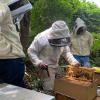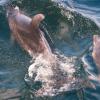Financing Protected Area Management: Experiences from the Caribbean
Protected area is the term now commonly used to refer to areas, whether marine, terrestrial, or coastal, that are managed with the objective of maintaining and enhancing their values for conservation, and often for recreation as well. National parks, marine parks, nature reserves, wildlife refuges, and historic sites all fall under the category of protected areas. Protected areas have existed in the Caribbean as far back as the 18th century, when forest reserves were established in Tobago and St. Vincent (Putney 1992). By the middle of the 20th century, marine reserves, national parks, and forest reserves had been established in many countries of the region. But it was only following the establishment of the Virgin Islands National Park in 1956 that the link between protected areas and tourism development began to be recognized. By 1981, the benefit/cost ratio of the Virgin Islands National Park on the local economy was estimated at 11:1 (Island Resources Foundation 1981). Throughout the last two decades in the Caribbean as in the rest of the world, there has been a rapid increase in the number of declared protected areas. A 1992 survey identified 175 protected areas in the insular Caribbean (Putney 1992), and that number is likely to have increased in the intervening years. However, only a very small percentage of these declared protected areas exist in actual fact. Most are paper parks in which no management occurs. The motivation to establish protected areas is often based on the perception that such areas enhance a country’s competitiveness in the tourism sector. However, while the political will to establish protected areas may be strong, the will to budget for their management has shown itself to be very weak, in the face of urgent national priorities and continuous fiscal crisis. In recent years there have been increasing calls to transform paper parks into managed protected areas, and to establish new protected areas to tap the ecotourism market and to provide a measure of protection against development pressures, particularly in the coastal zone. Given the limited ability of most governments in the region to meet the costs of management, alternative sources of revenue are being explored. Pressure to establish self-financing protected areas is also coming from international development and lending agencies, which often bear the capital start-up costs of protected areas and want to assure that their investments are secure. The implementation of mechanisms for financial sustainability has become a routine conditionality of loans and grants for protected areas. 2 Governments in the region are therefore looking at alternatives to government revenues for financing protected areas.
Area of Interest: Caribbean
Year: 1998




